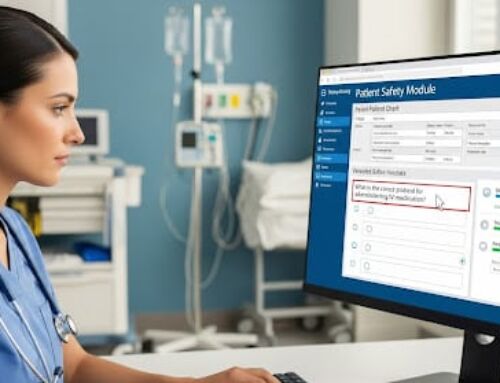
People are likely to get hurt when they don’t have the skills or knowledge to identify the many hazards in the healthcare environment. Healthcare employees are exposed to various potential risks, including biological agents, chemical substances, muscle strains due to repetitive movements, and workplace violence.
The mission of the Occupational Safety and Health Administration (OSHA) is to ensure “safe and healthful working conditions for working men and women.” To this end, employees in healthcare settings and other industries must undergo annual OSHA risk management training specific to their field. Although safety standards may vary somewhat across different medical sectors, OSHA training requirements for healthcare workers must cover these seven areas.
Bloodborne Pathogens
Trainees learn about various bloodborne diseases, such as Hepatitis B and HIV, that they commonly deal with. In addition to information about their dangers and transmission risks, training also includes instructions for infection control and the proper handling and disposal of these and other pathogens.
Emergency Action Plans
Employees learn what actions to take when an emergency, such as a fire, occurs in the workplace. Emergency action plans include escape paths, evacuation plans, first-aid methods, and where to locate essential emergency equipment, such as fire extinguishers and first-aid kits.
Ergonomics
Ergonomics refers to best practices in the workplace that prevent work-related injuries, decrease the likelihood of muscle fatigue, and increase productivity. Training healthcare employees on ergonomics involves teaching them safe ways to do their jobs, such as proper methods of lifting patients or how to repetitive strain.
Fire Safety
Trainees learn the principles of fire prevention and safety, including identifying potential hazards, implementing preventive measures, and engaging in early detection. Fire safety also includes maintaining a fire-safe environment, which involves properly storing and handling flammable materials. Employees also learn about the fire evacuation routes available at their workplaces.
Hazard Communication
Hazard communication equips individuals with the knowledge and skills to safely handle, use, and store hazardous substances. Hazard communication also involves minimizing the risk of accidents and exposure-related health issues.
As part of hazard communication, individuals receive instruction about the safe use and handling of chemicals and hazardous materials common in their workplaces. Training also covers safety data sheets (SDSs), proper labeling of chemicals, employee right-to-know, risk assessment, and emergency procedures.
Personal Protective Equipment
Personal protective equipment (PPE) includes masks, gloves, and other items people use and wear to stay safe. Employees learn what PPE they must use and wear on the job and how it protects them from hazardous exposures. They also receive information on the proper use, storage, and disposal of PPE.
Workplace Violence
Healthcare employees are susceptible to instances of workplace violence, either from co-workers or others who enter the environment. According to OSHA, workplace violence includes any act of “act or threat of physical violence, harassment, intimidation, or other threatening disruptive behavior that occurs at the work site.”
Workplace violence training for healthcare workers should include methods for recognizing instances and appropriately responding to them. Trainees should also know to report an instance of violence, no matter how seemingly minor.
Getting Support for OSHA Training Compliance
Ensuring healthcare workers fulfill their annual OSHA training requirements is an excellent step in ensuring compliance with safety regulations. However, most healthcare organizations need ongoing support to ensure compliance. Companies like Compliance Group offer guidance to hospitals, private practices, and other healthcare organizations on various aspects of compliance, such as conducting regular inspections, reporting incidents, and staying informed of the latest OSHA regulations.
Contact Compliancy Group today to learn how we can help you stay on top of OSHA healthcare training requirements and other issues relevant to healthcare compliance.









